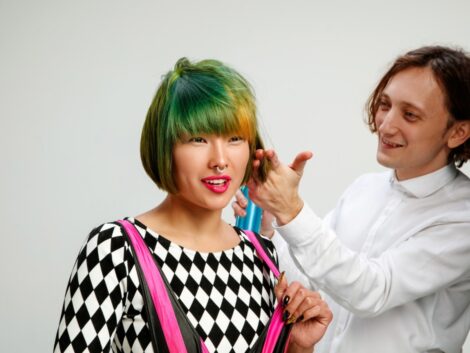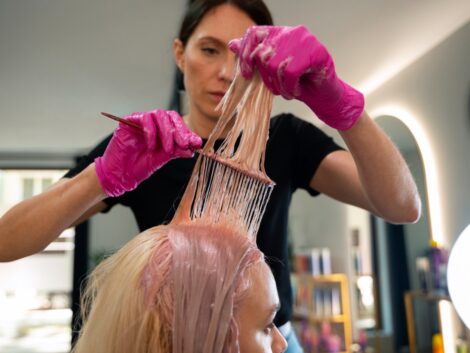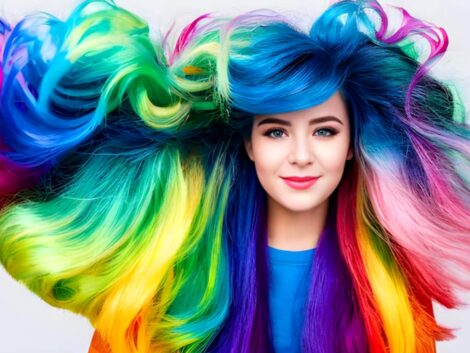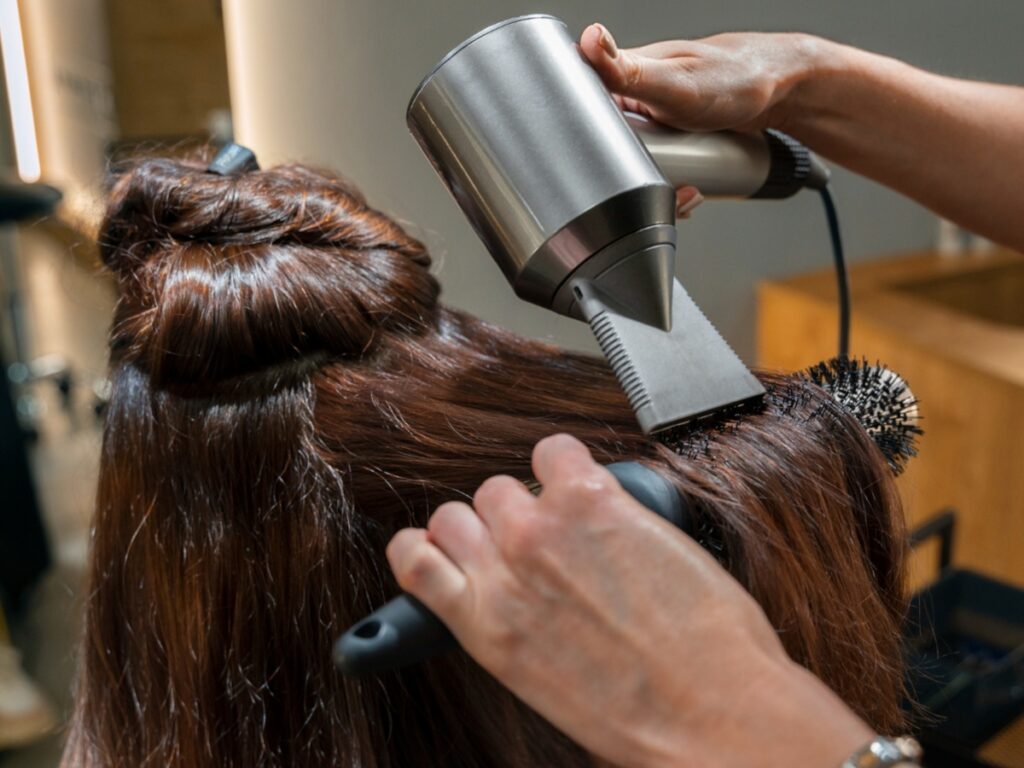The history of hair dye dates back thousands of years, with evidence of its use in various cultures throughout time. While it’s challenging to pinpoint a single individual or culture responsible for creating hair dye, we can trace the evolution of hair coloring techniques through different periods and regions.
The ancient Egyptians are often credited with some of the earliest forms of hair dye. They used natural ingredients like henna, indigo, and other plant-based substances to color their hair. Henna, in particular, was a popular choice for its reddish-brown hue. The Egyptians also used lead sulfide to create black hair dye, though it was highly toxic.
In ancient Rome, hair dye was a symbol of social status, and both men and women used various concoctions to change their hair color. They employed ingredients like sulfur and ashes to lighten the hair and iron filings to darken it.
During the Renaissance, the use of hair dye became more widespread in Europe. Recipes for hair dyes were documented in various beauty manuals, and some even included dangerous ingredients like sulfuric acid.
In the 19th century, chemists began to develop safer synthetic dyes, leading to the commercialization of hair dyes. The breakthrough came in the early 20th century, when French chemist Eugène Schueller created the first synthetic hair dye and founded the L’Oréal company in 1909.
Schueller’s invention marked a significant turning point in the history of hair dye, as it paved the way for the development of modern, safe, and widely accessible hair color products. Today, the hair dye industry continues to thrive, offering a vast array of colors and formulations to suit individual preferences and styles.
What hair color is rarest?
The rarest natural hair color is red. Only 1–2% of the world’s population has natural red hair. This unique hair color is primarily associated with people of Northern European descent, particularly in countries like Scotland and Ireland. The gene responsible for red hair is the MC1R gene, which can be inherited from both parents.
Red hair is often characterized by its vibrant shades of copper, auburn, or strawberry blonde. It is caused by a mutation in the MC1R gene, which affects the production of a pigment called pheomelanin. This results in the distinctive red hue of the hair, along with fair skin and often freckles.
Due to its rarity, natural red hair has been the subject of fascination and curiosity throughout history. In many cultures, redheads have been associated with unique qualities, stereotypes, or even superstitions. Today, people with red hair are celebrated for their distinctive appearance, but it’s essential to remember that hair color does not define a person’s character or abilities.

How many hair colors are there in the world?
There is no definitive number of hair colors in the world because hair color is incredibly diverse and can vary greatly among individuals. Hair color is determined by the presence and combination of two types of melanin pigments: eumelanin (which produces black and brown colors) and pheomelanin (which produces red and yellow colors). The varying proportions and interactions of these pigments, along with genetic factors, result in a wide spectrum of hair colors.
Common hair colors include black, brown, blonde, and red, but within these broad categories, there are numerous shades and variations. Hair color can also change naturally over a person’s lifetime due to factors such as aging, hormonal changes, and exposure to sunlight.
Additionally, the human population is incredibly diverse, with individuals from different ethnic backgrounds and regions having unique hair colors that may not fit neatly into common categories.
In essence, the diversity of hair colors is virtually limitless, and it’s impossible to provide a specific number. Hair color is a beautiful and unique aspect of human genetic diversity, with countless variations seen across the globe.

How many hair dye colors are there?
The number of hair dye colors available on the market is extensive and continually evolving as trends and consumer preferences change. Hair dye manufacturers offer a wide range of shades and variations to cater to various tastes and styles. Typically, you can find hair dye colors in the following categories:
- Natural Shades: These encompass various shades of black, brown, blonde, and red, designed to mimic natural hair colors.
- Fashion Colors: These are non-traditional and vibrant shades like pink, blue, green, purple, and more. They’re often used for creative and artistic hair coloring.
- Pastel Colors: These are softer, muted versions of fashion colors, often in pale pink, lavender, mint green, and other delicate shades.
- Highlights and Lowlights: These are used to add dimension to the hair, typically in shades slightly lighter or darker than the base color.
- Grayscale: Hair dyes designed to create silver, grey, or white hair, which has become a popular trend in recent years.
- Unconventional Colors: These include neon and fluorescent colors that can make a bold statement.
- Temporary and Wash-Out colors: These are meant for short-term use and can be easily washed out after a few shampoos.
- Ombre and Balayage Kits: These kits often include multiple shades to create gradients or sun-kissed effects.
- Natural Hair Color Enhancers: These products are designed to enhance and refresh natural hair color without dramatically changing it.
The exact number of hair dye colors can vary by brand and region, but it’s safe to say that there are hundreds, if not thousands, of different shades and options available to consumers, allowing them to express their personal style and creativity.

How often should I wash Hispanic hair?
The frequency of washing Hispanic hair, like any other hair type, can vary depending on individual preferences, hair texture, and specific needs. There is no one-size-fits-all answer, but here are some general guidelines:
- Hair Type: Hispanic hair, like hair of any ethnicity, can be fine, coarse, curly, wavy, or straight. The type of hair you have can influence how often you should wash it.
- Oiliness: The natural oil production of the scalp can vary among individuals. If your scalp tends to become oily quickly, you may need to wash your hair more frequently. On the other hand, if your scalp is drier, you might be able to go longer between washes.
- Hair Style: Your hairstyle and daily activities can also impact how often you wash your hair. If you have a short, low-maintenance hairstyle, you may wash it less often than someone with long hair that requires more care.
- Personal Preference: Some people prefer to wash their hair daily, while others find that washing every 2-3 days or even once a week works better for them. Overwashing can strip the hair of its natural oils and lead to dryness and breakage.
- Use of Styling Products: If you use a lot of styling products like gels, mousses, or hairsprays, you may need to wash your hair more frequently to remove product buildup.
In general, it’s advisable to listen to your hair and scalp. If your hair looks and feels healthy, and your scalp is comfortable, you’re likely washing it an appropriate amount. If you find that your hair becomes excessively dry or oily, you can adjust your washing frequency accordingly. Using a mild, sulfate-free shampoo and conditioner suitable for your hair type can also contribute to healthier hair.

Can Hispanics have red hair?
While it is relatively rare, red hair can occur in individuals of Hispanic descent. Red hair is primarily associated with people of Northern European ancestry, particularly those of Celtic origin, but it can appear in individuals from various ethnic backgrounds due to genetic variations.
The presence of red hair is typically attributed to variations in the MC1R gene, which can result in the production of the pigment pheomelanin responsible for red and yellow hues. These genetic variations can be inherited from parents of diverse backgrounds, leading to the occasional occurrence of red hair in Hispanic populations.
It’s essential to remember that human genetics are diverse, and hair color can vary widely even within the same ethnic group. Hair color is influenced by a complex interplay of multiple genes, and various shades, including red, can manifest in individuals regardless of their ethnic heritage.
Lastly, check out the mane caper shop.
Lastly, check out the mane caper shop.

